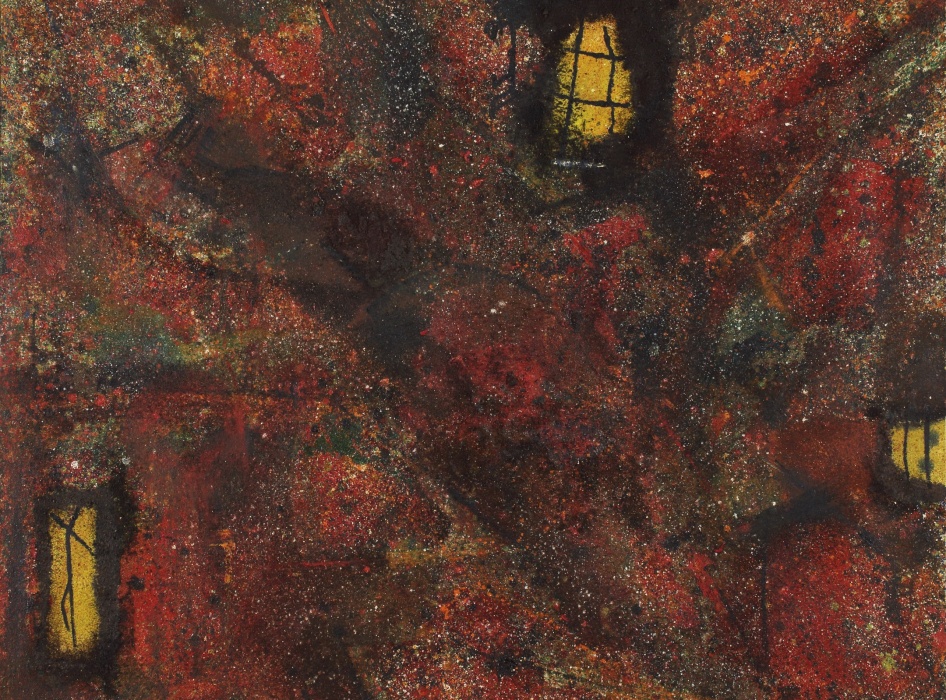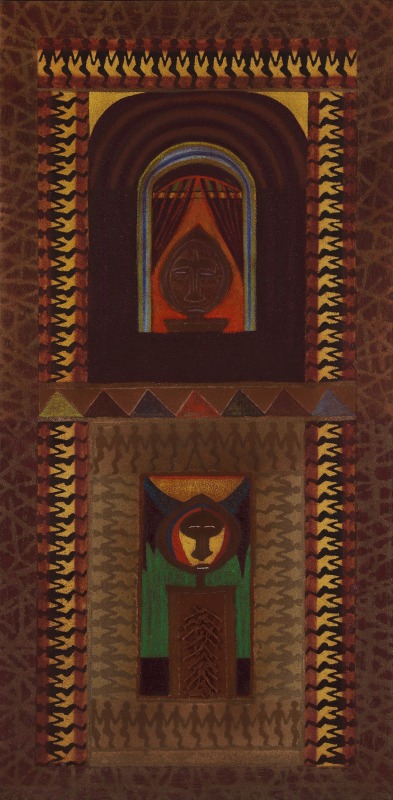

September 8 – 11
Cipriani South Street at the Battery Maritime Building
10 South Street, New York, NY, 10004
Alexandre is pleased to present a selection of eight paintings and six works on paper by Vincent Smith (b. 1929, Brooklyn, New York; d. 2003, New York, New York). Utilizing an array of mixed mediums, including sand, cut cord, and thick cracked surfaces, this selection of works from the 70s and 80s arose from Smith’s extensive travels in East and West Africa, and powerfully invokes his deep connection to the people and history he encountered there.
Born and raised in Brooklyn, Smith decided to become an artist after attending a Cezanne exhibit at the MoMA in 1952, quitting his job at the post office to begin art classes. Throughout his decades long career, Smith served as narrator of the experiences of the communities of Brooklyn and Harlem in which he lived and reveled. While struggling to support himself in his early years as an artist, Smith lived a bohemian lifestyle, attending jazz clubs most nights of the week alongside his famed musician friends, and training his eye as a careful documenter of the everyday. Later, he became involved with the fight for equality in the civil rights movement. Out of this environment was born Smith’s drive to create a true expression of his people and times, rendered in his own singular modernist language.
From his early career Smith was interested in the study of African history and culture, often visiting the collection of African sculpture at the Brooklyn Museum. In the ‘70s he traveled extensively in Africa (including Nigeria, Benin, Togo, Ghana, Kenya, and Ethiopia) and held several exhibitions of his work there. Many works emerged from these experiences, including his Stories from Africa series of vibrant watercolors (1975), which was used to illustrate a book of African folklore for children. His Dry Bones series (1982-1984) carried motifs that would be visible in his work before and after. Laden with symbolic meaning, the group of paintings based on these travels carries with it the history of a multitude of places Smith visited during his time in Africa. These often include references to the slave trade and African diaspora, as well as celebrations of traditional dance, clothing, and art. Art historian Sharon Patton indicates this symbolism in a 1984 catalogue entry for an exhibition of the Dry Bones series at Randall Galleries in New York:
Paraphrasing recent comments, sand means a thousand years of civilization; the migration of people seen as historical and cultural links such as “the Moors coming from North Africa to Timbuktu.” The irregularly shaped patches of sand (combined with Roplex and streaked across the work’s surface) remind the artist of ancient footprints. The twisted ropes symbolize people. Sand and dry pigment give the effect of weathered stones or rock surfaces or frescoes. Altered, broken, irregular surfaces have always fascinated Vincent Smith because they remind him of old scrolls, parchments and prehistoric cave paintings. The effect of weathered, very old surfaces is at times reinforced by the channels or cracks in the painted surfaces made by the palette knife. The sum effect is that of millennia.
Largely overlooked in the field of American painting of his era, Vincent Smith’s work reflects his desire to change the white-washed art historical narrative in a multitude of ways—through documenting African American life, and emphasizing African culture and history. As Smith said of his career, “I remember that Bird [Charlie Parker] once said to me, ‘Vince, stick to your vision; don’t let nobody turn you around,’ what sustained me was the fact that I was doing something significant, that I was hopefully making a contribution to the African American community and the world.”